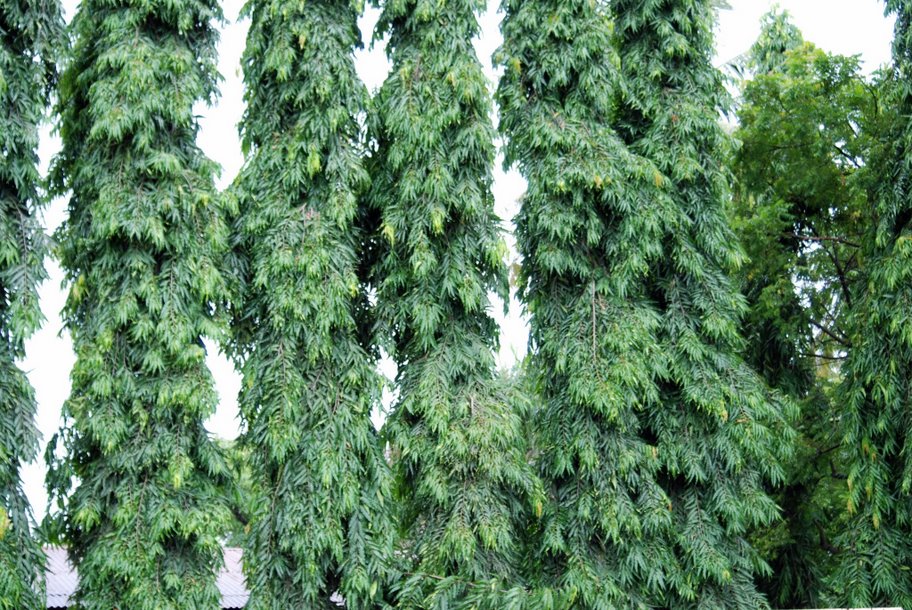Polyalthia longifolia (Sonn.) Thwaites
Polyalthia species are trees or shrubs, erect or rarely scandent, dioecious. Leaves simple, alternate, glabrous or softly pubescent. Flowers bisexual, solitary or few, leaf opposed, axillary, supra-axillary, pubescent, pedicellate and bracteate. Sepals 3, usually valvate, Petals 6 in 2 series, valvate, free, subequal, variously shaped, flat, spreading, outer petals slightly smaller or larger than the inner petals. Stamens numerous, anthers cuneate, connectives rhomboidal or orbicular, apiculate on top. Carpels indefinite, oblong, angled or cylindrical, style long, short or almost absent, stigma dilated, sessile, ovules usually 1-2 sometimes up to 5. Ripe carpels or fruits apocarpous, monocarps many, globose or ellipsoid, fleshly, stalked or rarely subsessile, Seeds usually 1, sometimes up to 5, grooved.
- Family: Annonaceae
- Habit: Tree
- Habitat: Mixed forests, altitude of up to 400 m and widely cultivated.
- Status : Common
Vernacular names
Polyalthia longifolia, also known as the Indian mast tree or false ashoka tree, is called by various vernacular names in different regions of India and Southeast Asia. Some common vernacular names for Polyalthia longifolia include:
- Ashoka Tree
- Deva Sura Sanadhi
- Deva Asana
- Deva Sara
- Ashok Patra (In some regions, it is specifically called this due to its use in Ashoka Vatika in the Ramayana)
- Mast Tree
- Sorrowless Tree
Medicinal Uses
Polyalthia longifolia, commonly known as the Indian Mast Tree or False Ashoka, has a few traditional medicinal uses:
Fever and Malaria: In some traditional medicine systems, parts of the Polyalthia longifolia tree, such as the leaves and bark, have been used to treat fevers, including those associated with malaria.
Anti-Inflammatory: The bark of Polyalthia longifolia has been used for its potential anti-inflammatory properties. It is sometimes used to reduce inflammation and related symptoms.
Antibacterial and Antifungal: Some studies have suggested that extracts from Polyalthia longifolia may possess antibacterial and antifungal properties, which could be useful in treating various microbial infections.
Analgesic (Pain Relief): In certain traditional practices, extracts or preparations from the plant have been used for their potential analgesic (pain-relieving) effects.
Digestive Disorders: In some cultures, parts of the tree have been used to alleviate digestive problems and improve overall gastrointestinal health.
